17 Things You Need to Know About Salt
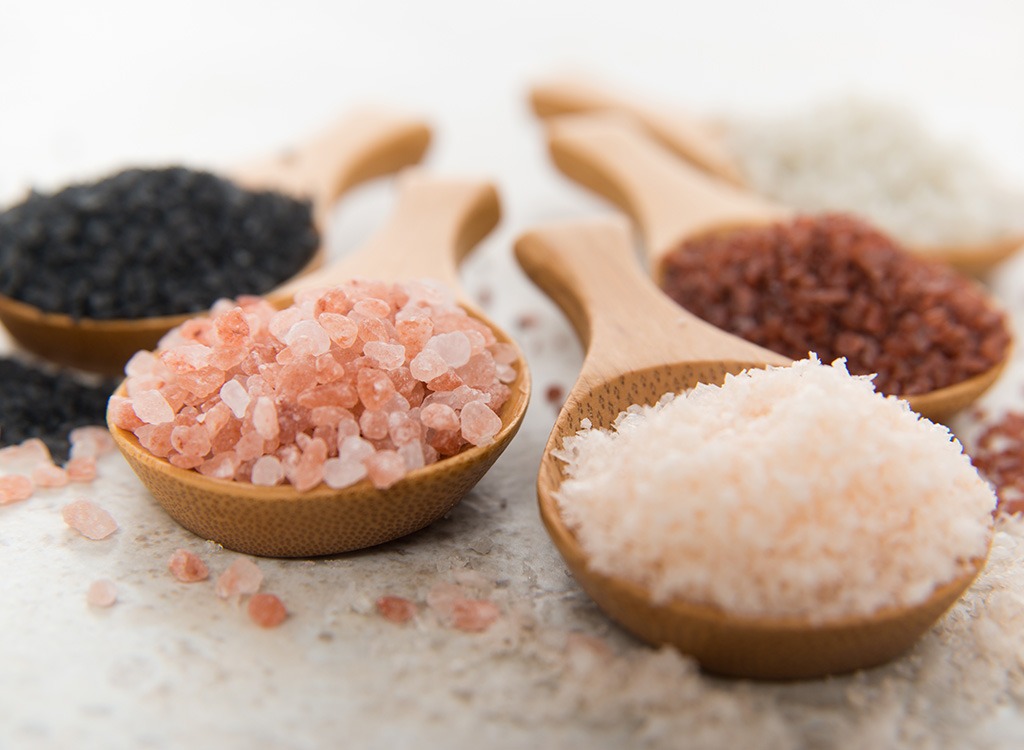
The first thing you should know is that your salt shaker does not belong on your dinner table, contrary to what your elders lead you to believe.
While different herbs and sauces may make a few cameos in your food prep, chances are salt is what makes your meals go ’round. Although it undoubtedly enhances the flavor of foods, too much salt can have—and often does have—negative health consequences. There are some health benefits to salt in extremely small quantities, but it’s best you know that reducing your intake is what will bring you the greatest benefits of all.
Don’t get salty with just yet—you don’t need to cut the seasoning out completely. But read on for what you should know about its effects and why it’s one of the pet peeves of nutritionists!
First, Some Salt 101
Salt’s Origins

And when we said 101, we meant it. If you’ve never thought twice about the salt sitting in the form of decorative shakers and fancy grinders, you should at least know it actually comes from salt mines or is evaporated from seawater. In terms of its composition, salt is mostly made up of sodium chloride (often referred to on nutrition labels as just sodium)—a mineral which occurs naturally in foods. Okay, that’s enough of that science. On to the other must-knows…
Table Salt
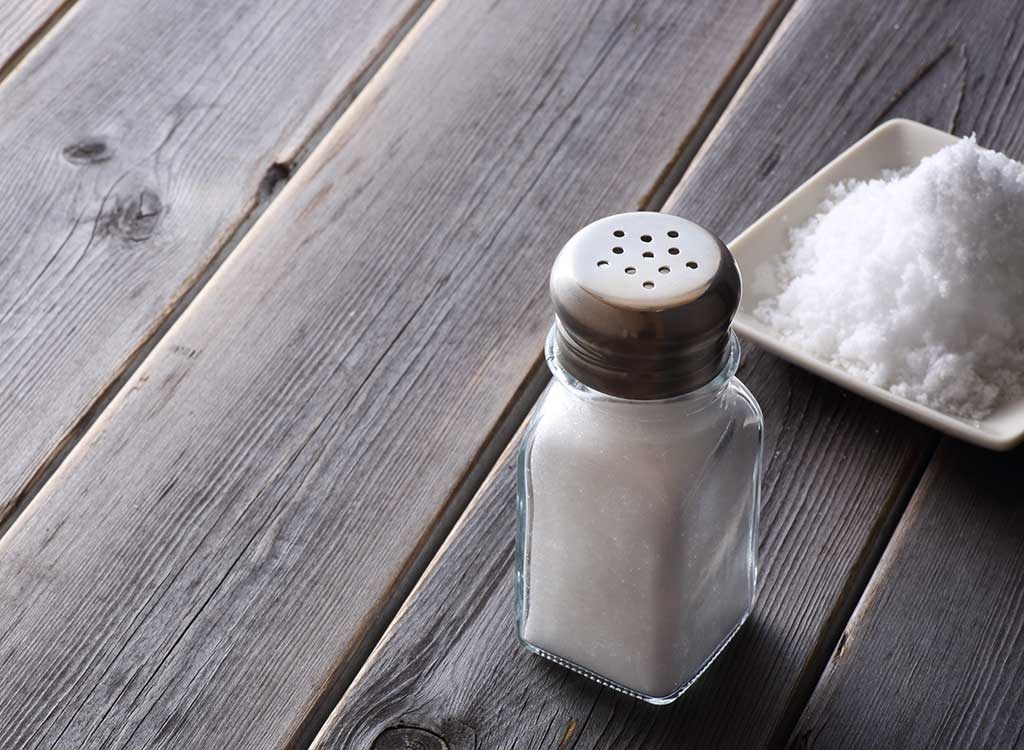
Table salt is refined and usually contains some kind of anti-caking agent, so it can flow freely out of your shaker and onto your food. While your body does, in fact, need salt to function properly, the amount is significantly smaller than the average person consumes on a daily basis. The necessary amount needed is around 500 mg while the daily average intake is upwards of 4,000 mg. Yikes! (Psst! A big reason for that is eating processed foods.)
Sea Salt
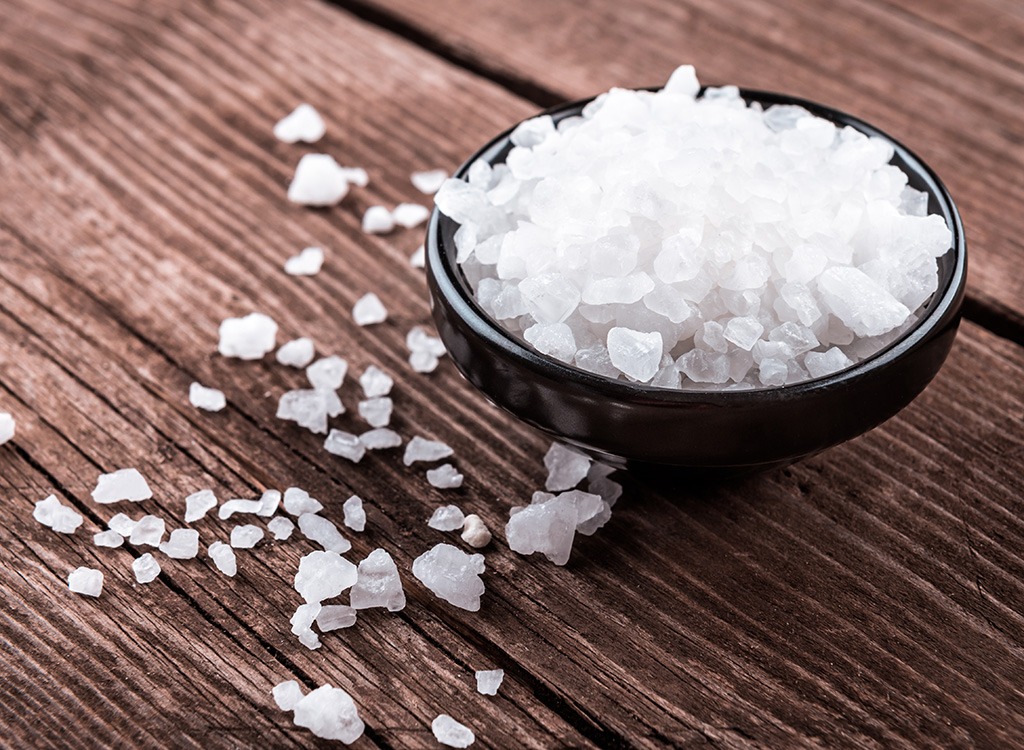
You can go mad trying to choose between pink Himalayan salt, sea salt and the regular white stuff—honestly, what’s the big deal? The short answer is: nothing. “Salt is salt. Sea salt and pink salt have a slightly more intense flavor—so you may have to use a little bit less overall as a result. Also, certain salts may also have slightly more mineral content than others, but the health benefits don’t outweigh the potential minerals you might be getting and do not justify utilizing another type of salt,” says Jessica Crandall, a Denver-based RD, Certified Diabetes Educator, and National Spokesperson for the Academy of Nutrition and Dietetics. Save your money and just stick with the layman’s variety.
Common Dietary Sources
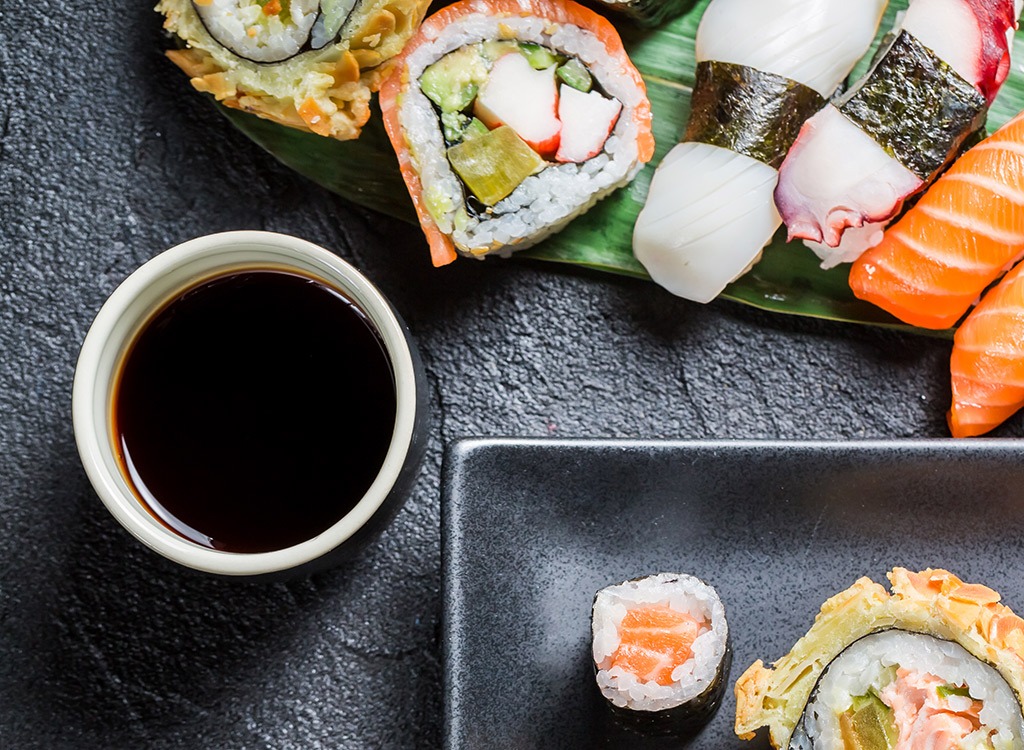
Sure, when we add salt ourselves we have a decent idea of how much we’re consuming, but many foods—some less obvious than others—are overflowing with sodium. “Some foods you may not realize can be high in salt are things like peanut butter, soups, and deli meats—all really common foods. Also, things like cottage cheese and condiments other than soy sauce can be pretty high in sodium as well. It’s important to flip over those labels and look for high sodium items,” says Crandall. And to make stuff at home when you like, like these 20 Best-Ever Fat-Burning Soups.
More Surprising Dietary Sources

Processed foods and a heavy hand with the shaker will certainly get you in the red zone when it comes to sodium intake, but what about restaurant meals and dare I say—dessert? The majority of sodium we take in every day is more often than not from unknown sources which include that brownie sundae you ordered after dinner. For example, Dairy Queen’s large oreo cookie blizzard packs in 670 mg of sodium and Sonic’s large turtle pecan masterblast offers your body a steep 1,970 mg—yet another reason to proceed with caution when ordering the sweet stuff.
What Happens When You Consume Too Much Salt
Water Retention
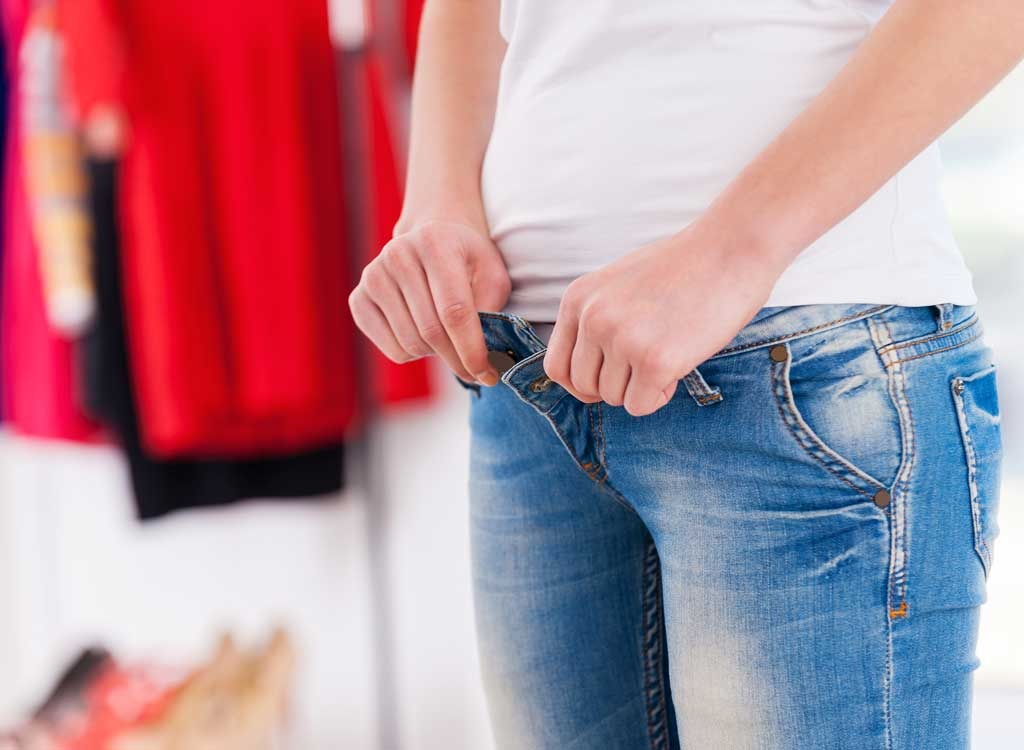
If you’re feeling bloated, you may want to take a second look at your food choices. Foods high in sodium tend to cause the body to retain water. “The biggest moment-to-moment benefit of reducing salt intake is that you won’t be carrying that extra fluid on your body,” says Crandall. So say bye-bye to indentations left behind by your super skinny jeans—chances are the pants are the right size, but you were taking in too much salt and not enough water and these 25 foods that stop bloating.
Weight Gain

Salt has no calories, so how could it possibly cause rapid weight gain? Well, researchers from Deakin University in Australia found that excess salt intake not only drives you to crave unhealthy foods but actually causes you to eat more overall. The math is simple: the more junk you eat, the more weight you can expect to surface around your midsection.
Thyroid Malfunctioning

The thyroid is a gland located at the front of our necks and produces hormones which can influence food metabolism, mood, and sexual function. “Iodine is necessary for your thyroid function, but it’s important to note that by cutting back our salt intake (since salt typically contains iodine), we’re not creating a deficiency because right now we’re consuming so much in excess that we’re also consuming excess amounts of iodine, which is not beneficial for your thyroid or other hormones,” says Crandall. Not sure if your thyroid is in the best of shape? Take a look at these 10 Signs Your Thyroid is Sluggish!
Electrolyte Imbalance

“We’re consuming so little potassium in our diets and so much salt which can lead to electrolyte imbalances. It’s important to prioritize reducing that salt on a daily basis and including more potassium rich foods like bananas, melons, coconut water,” says Crandall. If you are working out regularly, it’s important to keep your electrolytes balanced to prevent fatigue and muscle cramping.
Increased Blood Pressure

Consuming too much salt—which we’ve established that we all do—can have quite a few negative health consequences, including high blood pressure. According to the American Heart Association, an estimated 80 million Americans have high blood pressure and when left untreated, it can put you at greater risk for heart disease. While it’s easy to say you’ll just stop using the salt shaker, the tricky part is that 75 percent of the sodium we’re consuming is hidden in processed foods, so it’s extra important to scan labels. If you or your family has a history of high blood pressure, the AHA recommends limiting sodium intake to no more than 1,500 mg per day. We’d like to also recommend you avoid these 30 Worst Foods For Your Heart!
The Surprising Benefits of Salt
Healthy Brain Development

In excess salt is demonized, but a small amount—particularly of iodized salt—is essential for healthy brain development. Particularly important for pregnant women, iodine is an essential mineral which helps the body create thyroid hormones, which are critical for proper brain development in infants.
Healthy Muscle Functioning

Appropriate amounts of salt in the body are necessary for healthy, functional muscles because they assist in muscular contraction. While sodium deficiencies are extremely rare today, cutting back too low on salt may lead to an imbalance and as a result muscle cramping. However, the risk for developing muscle cramps attributed to sodium deficiency are more likely in extremely active folk such as athletes who train for hours in a day, especially in high heat.
Increased Ability to Fight off Infection

Though still in its early stages, research conducted at the University of Regensburg in Germany found that salt may help the body protect itself from bacteria. In the study, mice who were fed diets higher in sodium showed a greater immune response to infections and actually cleared them more quickly than those who were fed low-sodium diets. Now this doesn’t mean you should re-introduce your salt shaker, but rather that the small amounts of sodium we introduce to the body may help to strengthen our immunity.
How to avoid salt
Remove the Salt Shaker From Table

“If you’re micro-managing your salt intake, that leaves you with about 500-700 mg of salt per meal—which can definitely be done—but it’s important to be aware of that. Trying to take the salt shaker off of the table really does help to mitigate about 50 percent of the extra sodium that we’re consuming in our diets on a daily basis,” says Crandall. Even if you only give it one shake, a quarter teaspoon contains about 400 mg of sodium, so that dash of salt really does add up. Just a single teaspoon will get you to that recommended daily limit of 2,300 mg!
Flavor With Herbs
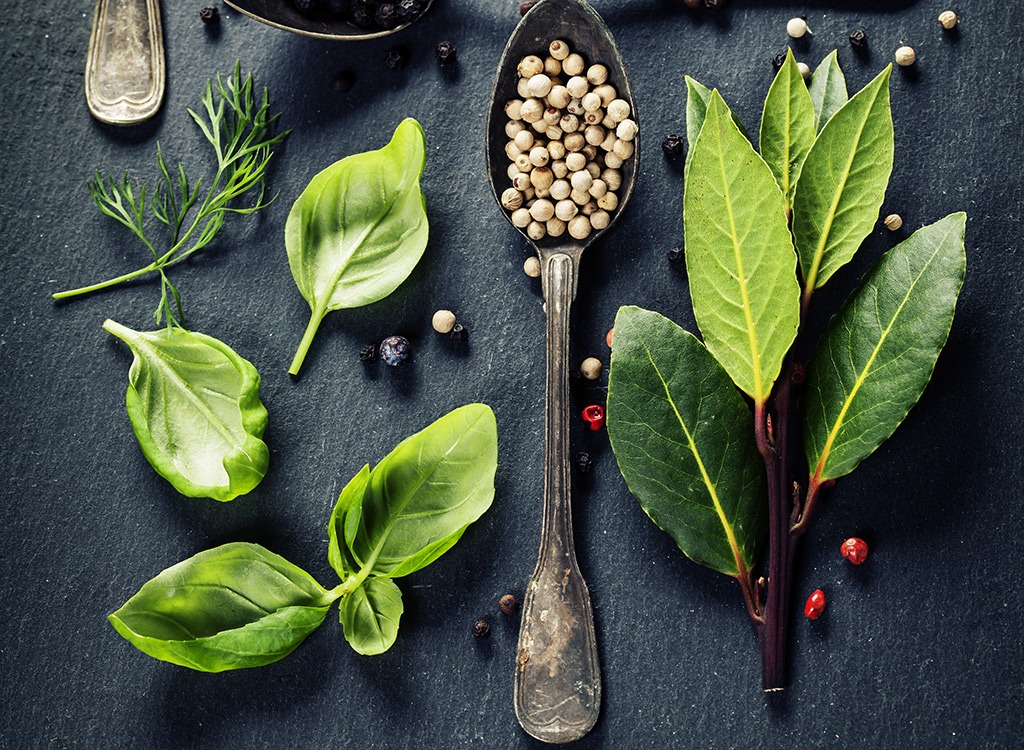
No salt doesn’t have to translate to no flavor. In fact, ditching the salt may help your taste buds adapt and crave different types and ranges of flavor. “I typically flavor things with herbs and spices instead of salt. Something like garlic is a great flavor enhancer without adding that salty flavor. Slowly start cutting back because your taste buds do change over time, so the less salt you eat, the less you crave and the more you’ll start to recognize how salty things really are,” says Crandall. For more ideas of what to keep stashed for healthy cooking, check out these 30 Staple Ingredients for Weight Loss!
Read Labels

Checking food labels is practically a given, but it can be tricky deciphering them at times. If an item is considered “sodium free” it means it has less than 5 mg of sodium per serving. To qualify as “low sodium”, a product needs to contain around 150 mg or less. Don’t be swayed too easily by foods claiming “reduced sodium” either—all that means is the product contains 25 percent less sodium than it’s original version, but it would serve you best to check exactly how much sodium still exists per serving. Also, bear in mind that even if a product doesn’t taste very salty, it’s possible quite a bit of sodium could be hiding within.
Beware the Restaurant Dishes

Salty desserts at restaurants are so sneaky! Just like salads overloaded with sugar, sweet treats from restaurants can be packed with sodium. Same goes for everything else on their menus, too. Soups, desserts, and appetizers are some of the most common items that could have crazy-high sodium amounts, as well as anything that uses processed foods like deli meats and non-homemade ingredients.